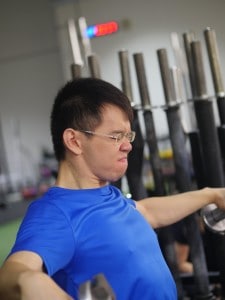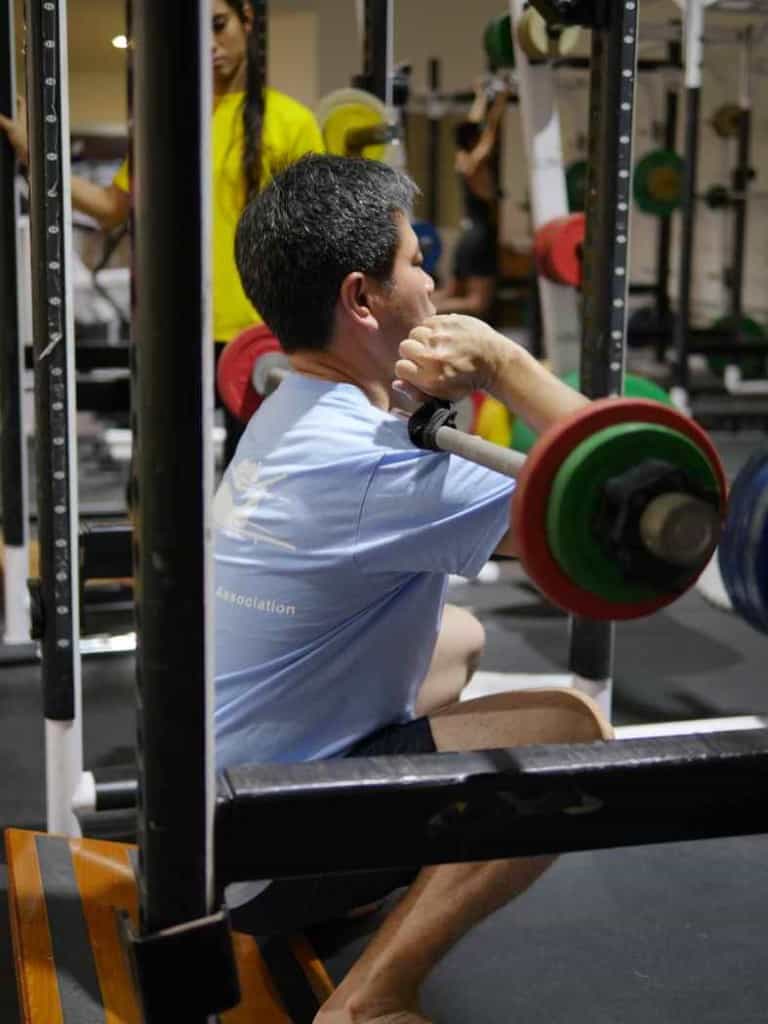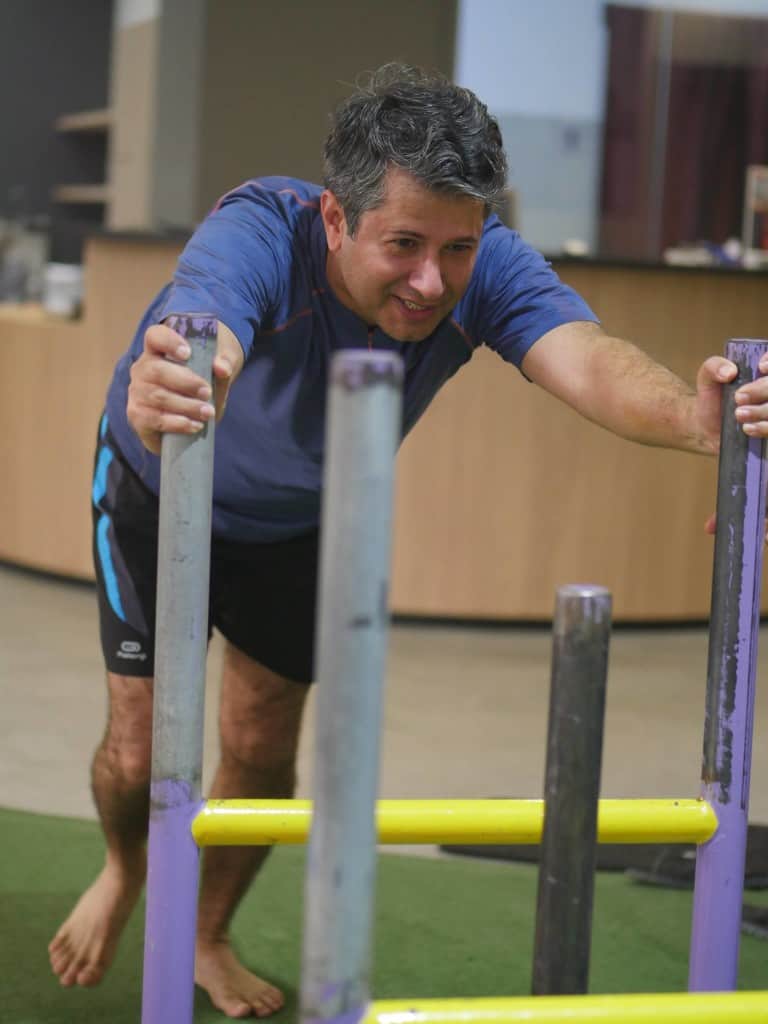Introduction
This section will introduce you to some of the principles that our personal training team uses when designing customized exercise programs for clients over 40.
Below is a form to access a sample workout program that puts many of these principles into action.
After reading the tips in this section, try the program out. It is a good program to start your journey into health and fitness.
Tip #1 – Focus on strength training
Maintaining lean muscle directly leads to a higher quality of life as we age.
The National Academy of Sports Medicine estimates that we lose about 5 percent of our lean muscle each year as we pass age 35. But the decline will not be that rapid if you are doing properly planned strength training. In fact, in studies of trained populations, the decline is so negligible as to be statistically insignificant. That is the route for me!
Strength training is the only proven way to maintain lean muscle. Stretching, cardio, walking, and most leisure sports do not help you maintain and gain muscle.
I’m not talking about looking like a professional bodybuilder. However, when you lift weights properly, hormone output, stimulation of the connective tissue and activation of the nervous system all combine to build and maintain your muscle mass.
This means that every part of your body works better.
I remember the conversation I had while working with a client who was recovering from cancer. She was over 50 years of age and once asked me, “Wow, I feel so good after doing this gym training for eight weeks. How does it work?”
“I don’t know for sure,” I replied. “But imagine every blood vessel just a little bigger and every muscle fiber a little stronger. What if every ligament was a little thicker, every brain and nerve cell a little more efficient and every organ worked a little faster? What if every gland produced hormones at a more youthful level? That’s what properly designed strength training does for you.”
Two fears of women as they age are sarcopenia (muscle wasting) and osteoporosis (weakening bones).
Strength training dramatically slows both diseases. Strength training is very time-efficient when programmed well. A hard weights session can increase calorie burning for up to a day after the exercise. This is a great way to get the maximum benefit per minute of exercise – very important for busy people who need to make time for workouts in their demanding schedules.
Tip #2 – Add in some cardiovascular training twice a week

Cardiovascular training has been shown to reduce the risk of disease.
As we age, our arteries get stiffer. This is known as “poor arterial compliance,” and means that our arteries don’t expand and contract as well, leading to high blood pressure. Cardiovascular exercise directly improves arterial compliance.
While strength training should be our primary form of exercise, cardiovascular exercise (like 30 minutes of rowing, cycling or brisk walking) has benefits too, especially as we grow older. The research is quite clear. Adding some cardio has demonstrated good results for heart health markers in both clinical studies and in the health reports of our own clients.
Cardiovascular exercise has also been shown to improve brain function due to increased blood flow, increasing focus and productivity. It also reduces the risk of depression due to the release of endorphins (the “happy brain chemicals”).
Cardio can be done for different lengths of time. And it can be done at different levels of difficulty. Difficulty can be measured using the “Rate or Perceived Exertion” (RPE) scale.
This scales runs from 1-10. And can be used in any kind of cardio. From running to swimming to bike riding. Here is an example for walking/running.
- 1/10 – Walking slowly on the beach with your spouse
- 3/10 – Brisk walk
- 5/10 – Jog
- 7/10 – Striding Run
- 9/10 – Fast Run
- 10/10 – Chased by wild lions!

A good start is to perform 10 minutes of cardio, twice per week at RPE 3-4. Slowly increase this by 5 minutes per week till you reach 30 min. Then work on increasing the RPE up till about 7.
Tip #3 – Use safe loads

If you have been exercising or playing sports for many years, you may have some nagging injuries. There is no need to aggravate them with frequent use of excessively heavy loads.
This is especially true for men. Once we aimed to lift as much weight as our bodies allowed. This impressed all our friends – mostly our male friends (ha-ha!). But years of heavy lifting do take a toll on the body.
Most people who have years of sports or heavy gym training under their belts have some kind of persistent pain. This is usually made worse when carrying near-maximal weights.
The solution is not to stop exercise. It is to use maximum weights less frequently. Spend most of your sets using weights that allow you to do 8-12 perfect reps.
You will not suddenly become a weakling. In fact, by using higher reps and training with very heavy weights less frequently, you can stay fresher and more injury-free and still increase your strength.
Tip #4 – Use slow tempos to keep workouts challenging yet safe

For our older trainees, we like to use slower lifting speeds to keep things safer. Fast, explosive training is excellent for the competitive athletes we train. But for the person who starts or continues exercise at a later age, slow, controlled exercise speed gives maximum benefits with minimal injury risk. A good starting speed for newer trainees is something like 2-3 seconds to lower the weight and another 2-3 second to lift the weight.
Tip #5 – Use drop sets, extended sets and pauses
Along with slower exercise speeds, we also use other methods which can help clients progress without increasing their risk of injury.
Drop sets steadily lower the weight as you get more fatigued so you can keep going without much risk of joint pain.
Extended sets require that you move quickly between exercises of the same body part. They are similar to drop sets, but you change to an easier exercise instead of using an easier weight.
Pauses mean taking mini-breaks at various points in each rep. For example, you might pause for five seconds at the top, middle and bottom of your bench press. This would provide a large challenge to your muscles, yet with a low injury risk and low stress on your joints.
These methods keep workouts challenging. Yet safe.
In the video below is an example of an “extended-set” workout for your chest muscles. Each exercise should be done with a challenging weight. The controlled lowering combined with the minimal rest between exercises. Means you can use very safe loads and yet achieve good results.
Tip #6 – Use challenging but low-impact exercise to stay fit

The best examples of this type of exercise are pushing and dragging objects. There is no direct load on your body as you do these activities, yet your muscles and cardiovascular system get a great workout.
Every exercise, sport, stretch or rehab method has a risk but also a potential benefit. Risk-to-reward ratio is important in any exercise program, and even more so as you pass age 40. For Tips #3 to #6, the goal is to provide the maximal benefit to your different body systems (hormonal, muscular, connective tissue) with minimal risk to your joints.
Get Your Free Fitness After 40 Downloads
Get your Fitness After 40 Checklist, Workout Video, And Workout Programme Here
Thanks For Downloading! Time to take action:)
